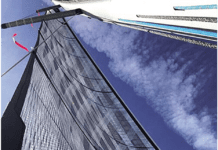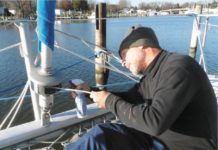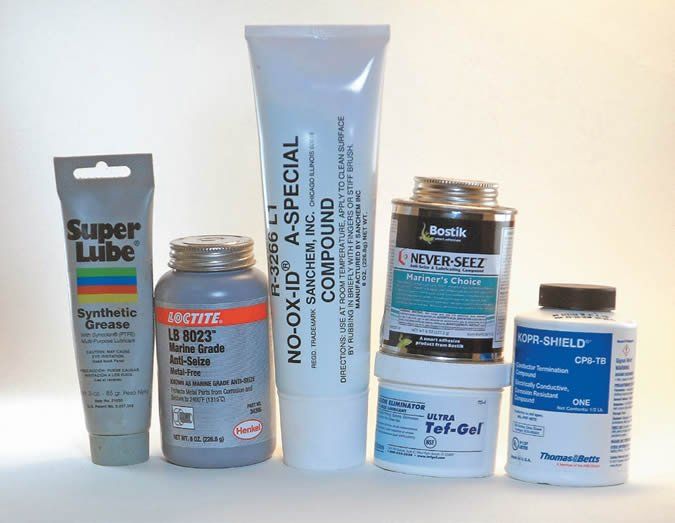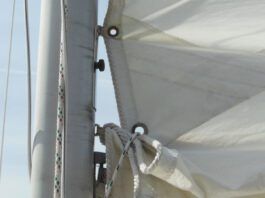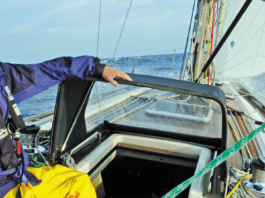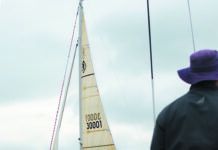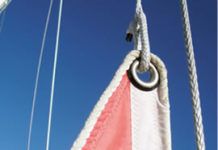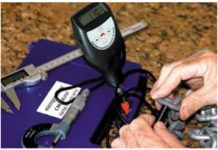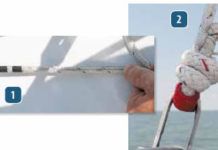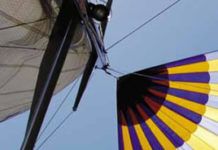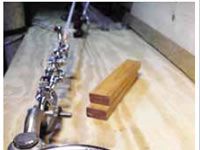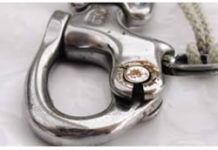The No-sew Webbing Strap with Link Buckle
Weve sewn our fair share of eyes in nylon webbing, but heres an easy no-sew alternative for creating a webbing strap with a buckle (shackle) that can be used for easily lashing down the dinghy, a battery, or even holding up your pants in a pinch. It is based on stuff a sailor has on hand-webbing, a chain link, and a shackle-and is as strong as professionally sewn ends, plus it can be untied after loading. It has tested at greater than 85-percent breaking strength and 100 percent of minimum rate strength, and it works on both nylon and ultra-high strength materials like Vectran webbing.
The Science of Headsails Part II
The right roller-furling headsail is as beneficial to a sailor as a good zoom lens is to a photographer. But just as the zoom lens has limits, even the best furling headsail is challenged at the extreme ends of its range. In the October 2015 issue, we explored the basic sail needs of a daysailor. For this report, the second and final in our series on headsails, we asked five professional sailmakers from around the country to weigh in on the ideal sail inventory for coastal cruising.
Is Your Quiver of Sails Sufficient?
In this two-part look at headsail options, we focus on sails for coastal cruisers and daysailors. The first part delves into what weve observed during our new-boat sea trials and vintage sailboat reviews. In next months report, we will divide the fleet into categories based on how, what, and where boats are sailed and explore what sailmakers have to say regarding headsail material and what sail options they recommend for a 35-footer. Our goal is to define which types of sailors will do just fine with a standard boat show sail inventory (a mainsail and a roller-furling jib or genoa), and to examine whether coastal cruisers need a second smaller headsail. Well also look at whos a candidate for a drifter/reacher or an asymmetric spinnaker, and why thats a measure of both crew mindset and vessel design.
Adding a Solent Stay
Whether you view it from the top down or the bottom up, a Solent rig needs to be carefully thought out, well-engineered, and strategically located. Some sailors add a short bow sprit or U-shaped, tubular extension that includes a bobstay and supports the attachment of a new headstay. The old headstay chainplate becomes the new tack point for the Solent stay. Another approach is to retain the existing headstay and simply attach a new tang just a bit below the headstay sheave box. Then add a deck fitting to attach the Solent stay and tack the sail(s). The deck must be reinforced with a transverse member, or a tie rod must be mechanically fastened to the stem so that the tension loads don't damage the deck.
Going Soft on Shackles
Fiber shackles have been in use for centuries-the simple knotted toggles provided all manner of service on square-riggers and even older craft. When made correctly with the right material, fiber shackles are strong, can be released without tools, and are jam-proof in the most severe weather. Like cotton sails, this 200-year-old technology has been updated through the use of modern materials.
Sherardizing Alternative
In order to impart corrosion resistance to steel, the items are commonly galvanized, immersed in a bath of molten zinc. Hot-dip galvanizing is well established and accepted, but there are alternate technologies like sherardizing.
Top Whipping Twines
The term whipping twine is somewhat misleading, suggesting a single purpose for a product with seemingly endless uses. These are the thin-woven strands that all hand-sewing projects depend upon, and in the process of exploring various stitching projects, weve gone through spools and spools of it.
Tylaska Tops in Snap Shackles
Snap shackles have become as familiar to sailors as pots and pans are to a harried chef. From dinghies to mega yachts, the function of these ubiquitous bits of hardware remains consistent. Each affords a quick and reliable means of making that all-important halyard-to-sail junction. The absolute minimalist might say that a bowline can do the same, afterall, isn't it the favored means of attaching sheets to the clew of a sail? The knots-for-snap shackles debate loses out, however, when it comes to hasty halyard swaps, not to mention the release of a loaded spinnaker guy. And even if youre not quite ready to label these shackles as essential hardware, they certainly do make life on the foredeck a whole lot easier.
Testers Compare Swivels, Look for Pin Creep
For this evaluation, each shackle was visually inspected, component parts were measured, and stainless-steel alloys were noted. During this initial inspection, we tested how easy each snap shackle could be closed with one hand; we also repeatedly measured how easily the un-clipping process could be executed using a simple tension spring-test on the piston-pin versions and by using a height scale on the Tylaska push-to-release latching model. We recognize the importance of pin security under load and felt that the reluctance of a shackle pin to be easily pulled under load was, in many cases, an attribute.
Stainless Steel: Advantages and Ailments
When it comes to stainless steel, nothing seems more baffling than the latest array of alloys that have migrated into the marine market. Not so long ago, stainless steel was referred to as 302, 304, and 316. These differing grades of stainless varied according to chrome and nickel content and the corrosion resistance they afforded.













